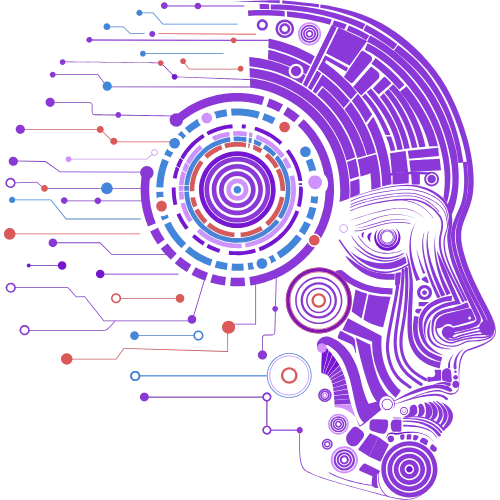.
Hands-On Intro to Software Engineering Machine Learning Meta Guide
Software Engineering Machine Learning Meta Guide: Engineering in software and machine learning (ML) are a nexus of domains in today’s technology. Their meta-relationship- structuring reliable codebases while crafting intelligent algorithms- drives innovative applications in everything from smart assistants to predictive analytics pipelines.
This thorough guide goes deep into the application of both disciplines to understand how ML integrates with software systems, the most common optimization techniques, best practices, and expert insight. We also cover essential questions such as a tensor, why Python is used, and why ML is difficult. Whether a novice or aspiring engineer, you’ll learn the entire picture without word-of-mouth.

1. Why Combine Software Engineering & Machine Learning?
- Software engineering provides the foundational framework—think modular code versions, version control, and CI/CD pipelines. ML provides flexibility via data-driven models. Making intelligent applications requires mixing both: an open architecture that allows for the scalable ingestion of data, model training deployment, and continuous monitoring.
- This synergy creates roles such as the engineer specializing in machine learning, a career based on algorithm design and system reliability. Many embedded systems that use ML—from IoT devices for machine learning to cybersecurity ML platforms—require solid engineering principles to manage the real-time data as well as rigorous performance assurances.
- 2. Learning Foundations & Tools
- To be successful, begin with these fundamental areas:
- Mathematics and Theory: Learn about the core ideas of optimization (non-linear machine learning, optimization, and gradient descent), probabilities (Bayesian machine learning), and tensor manipulation.
- Programming and languages: Python remains dominant in ML because of its ecosystem. Its libraries (NumPy, pandas, TensorFlow, PyTorch) define modern practice locus.sh+3en. Wikipedia.org+3paloaltonetworks.com+3.
- Data Pipelines Utilize the best practices in software engineering for ETL stream, batch processing versions, and the monitoring of drift in models.
- Tools for deployment: Learn Docker, Kubernetes MLOps, and other platforms for deploying secure systems.
- 3. Understanding Core Concepts
- 3.1 What Is a Tensor in Machine Learning?
- In ML, tensors are multidimensional arrays that include scalars that are 0-D, vectors that are 1-D, matrices that are 2-D, and larger-dimensional arrays called tensors. Deep learning frameworks such as TensorFlow and PyTorch depend heavily on tensor-based operations.
- 3.2 What Is Non-Linear ML Optimization?
- This means reducing the loss function that isn’t linear—e.g., neural networks. Non-linear optimization uses gradient-based strategies (SGD, Adam), Hessian approximations, and line search strategies to locate the smallest possible loss. It’s more complicated but essential to creating accurate models.
- 4. Building ML-Powered Applications (From Idea to Deployment)
- Utilize this workflow:
- The definition of the issue for the problem, e.g., classification or regression or detection of anomalies.
- Design features – pick necessary inputs (what are the key features in machine learning?).
- Learn models. Apply algorithms (linear regression SVM neural nets and reinforcement learning).
- Evaluate & tune – adjust hyperparameters, control learning rate, use cross-validation.
- Implement Containerize the APIs and incorporate them into your production.
- Monitor & iterate – track model performance and retrain as data evolves.
- This whole process is part of what is known as the process of machine learning of the cycle that blends fundamental engineering practices with machine learning experiments.
- 5. Optimization: Machine Learning That Learns Smarter
- Deep ML systems need innovative optimization strategies:
- Learn Rate Control Essential in non-linear optimization, usually controlled by adaptive optimizers (Adam, RMSprop).
- Regularization and feature selection: Prevent overfitting by focusing on features with high quality (feature choice machine learning) using dropouts and L2 norms.
- Bayesian Optimization: Balances exploration vs exploitation for hyperparameter selection.
- Measurements for Evaluation Utilize precise metrics – MAE, negative mean absolute error (MAE), ROC AUC — to gain well-balanced performance insight.
- 6. Advanced Topics & Meta Approaches
- Double Machine Learning: Employs ML models to determine causality and debasing.
- Scientific ML merges specific physics for a particular domain with data-based models.
- 3D ML and Image Techniques, such as 3D denoising using ViT and image reconstruction using noisy data ML, are pushing the limits of visual computing.
- GANs and Transformers Generative models and sequences redefine innovation and translating.
- IoT integration embedded machine learning on devices, processing sensors’ data and making inferences at an edge.
- 7. Career Paths & Learning Resources
- Roles:
- In contrast to Data Scientists, machine learning Engineers create large-scale ML systems, while data scientists are focused on analytics.
- Internships and Entry Roles Machine learning internships and entry-level jobs in machine learning, as well as platforms like Emeritus’s machine learning boot camps, provide excellent on-ramps.
- Higher Education: From a master’s degree to a PhD in machine learning, educational programs (CMU, Stanford) emphasize research and theories.
- Conferences and Communities: Attend conferences, learn from new research papers, or follow active subfields such as GAN over the last three days, ML astrobot, or innovations protein abundance prediction ML.
- 8. Is Machine Learning Hard?
- The short answer is: it depends. Conceptually speaking, ML is about math, programming, and understanding data pipelines. It’s attainable with determination. Learning complex topics (e.g., non-linear optimization and tensors, systems scaling) is more difficult. But structured paths such as “a hands-on intro to machine learning” make it easy for beginners to learn.
- 9. Why Use Python for ML?
- Python stands atop ML development due to the following:
- Extensive libraries (TensorFlow, PyTorch, scikit-learn).
- Easy syntax and speedy prototyping.
- Incorporation of data-related tools to clean (pandas) and visualization (matplotlib) and Notebooks (Jupyter).
- A vibrant community and an open-source culture.
- 10. Real-World Use Cases
- Edge devices and IoT: Embedded models can be used for predictive maintenance and anomaly detection.
- Cybersecurity: The use of ML to detect threats and analyze patterns.
- Medical/Science Genomics, predictions of protein abundance, and computational simulations for scientific purposes.
- Corporate Analytics: real-time dashboards and forecasting with predictive capabilities.
- Generative Content: GANs can create audio, video, text, Images, and text.
Our other related Posts is Hear
- Digital marketing is the promotion of products or services using online channels such as SEO, ( On Page SEO, Off Page SEO, Technical SEO, E-commerce SEO Rankstar Local SEO Rapid as well as Content Marketing and So On social media marketing, email marketing, content marketing, and PPC advertising. It helps businesses boost brand visibility, attract targeted traffic, and drive sales through digital platforms and online marketing strategies.
- Green technology refers to innovative solutions that promote environmental sustainability by reducing carbon emissions, conserving energy, and minimizing waste. It includes renewable energy (solar, wind), eco-friendly materials, energy-efficient systems, and sustainable transportation.
FAQs — Mobile Optimization for Local SEO
A method focused on implementing real-world ML techniques by using codes, datasets, and pipeline implementation.
Techniques to minimize complicated, non-linear loss functions – standard for neural networks and deep learning.
Machines learn to detect patterns in data and make predictions without explicit programming, as documented in research and educational documents.
Tensors are a multidimensional array. They are the primary data structure of deep learning frameworks.
With a consistent learning path and the right resources, it’s doable. In the advanced areas, expect to encounter more complex issues.
Yes, Natural Language Processing (MLP) is a subfield of ML that focuses on the processing and understanding of human language.
Features are variables that can be input and utilized to build models taken from and engineered inside databases.
To create models that can be generalized to unobserved data and make reliable predictions or classes
It provides a robust library ecosystem, easy access, quick iteration, and strong community support communities.












